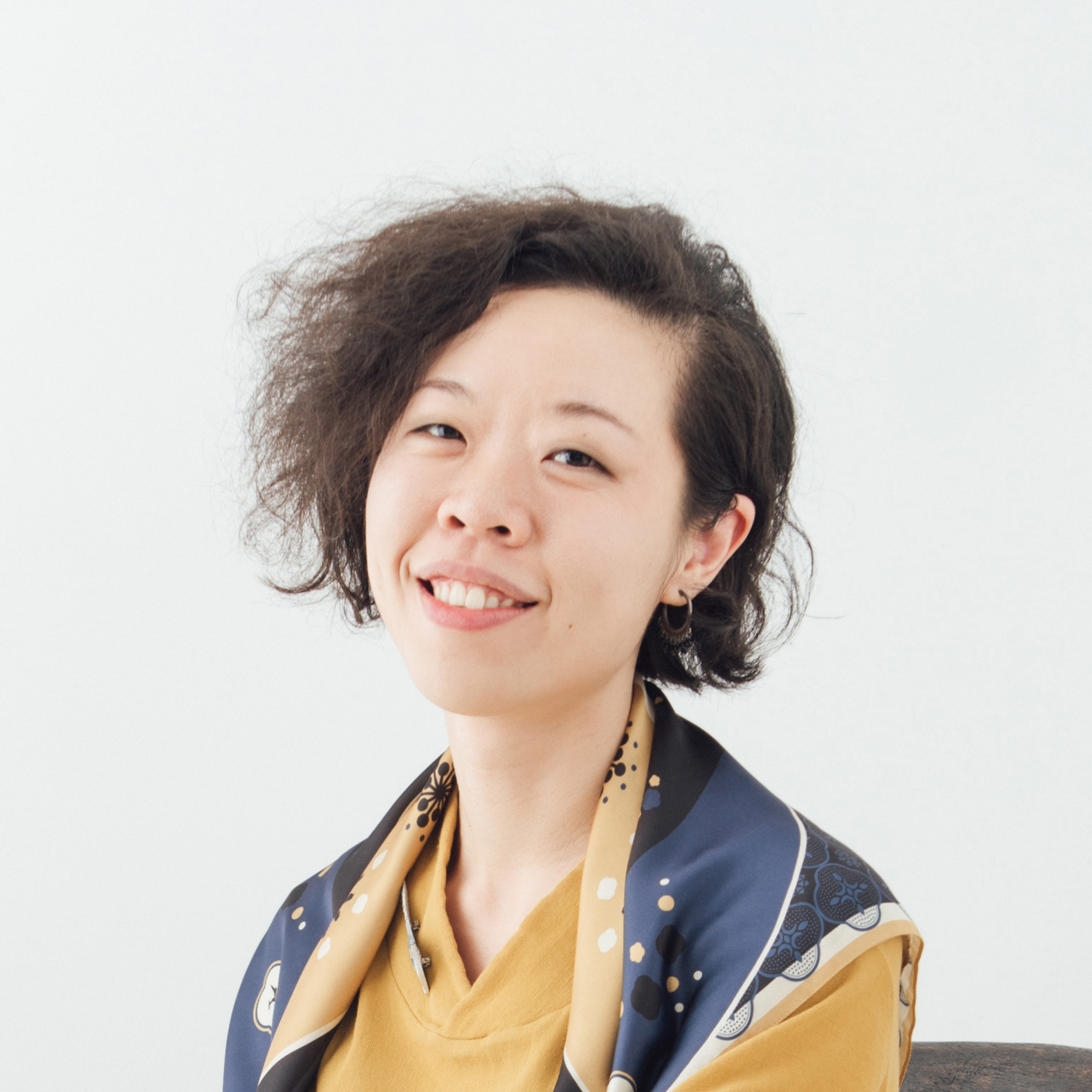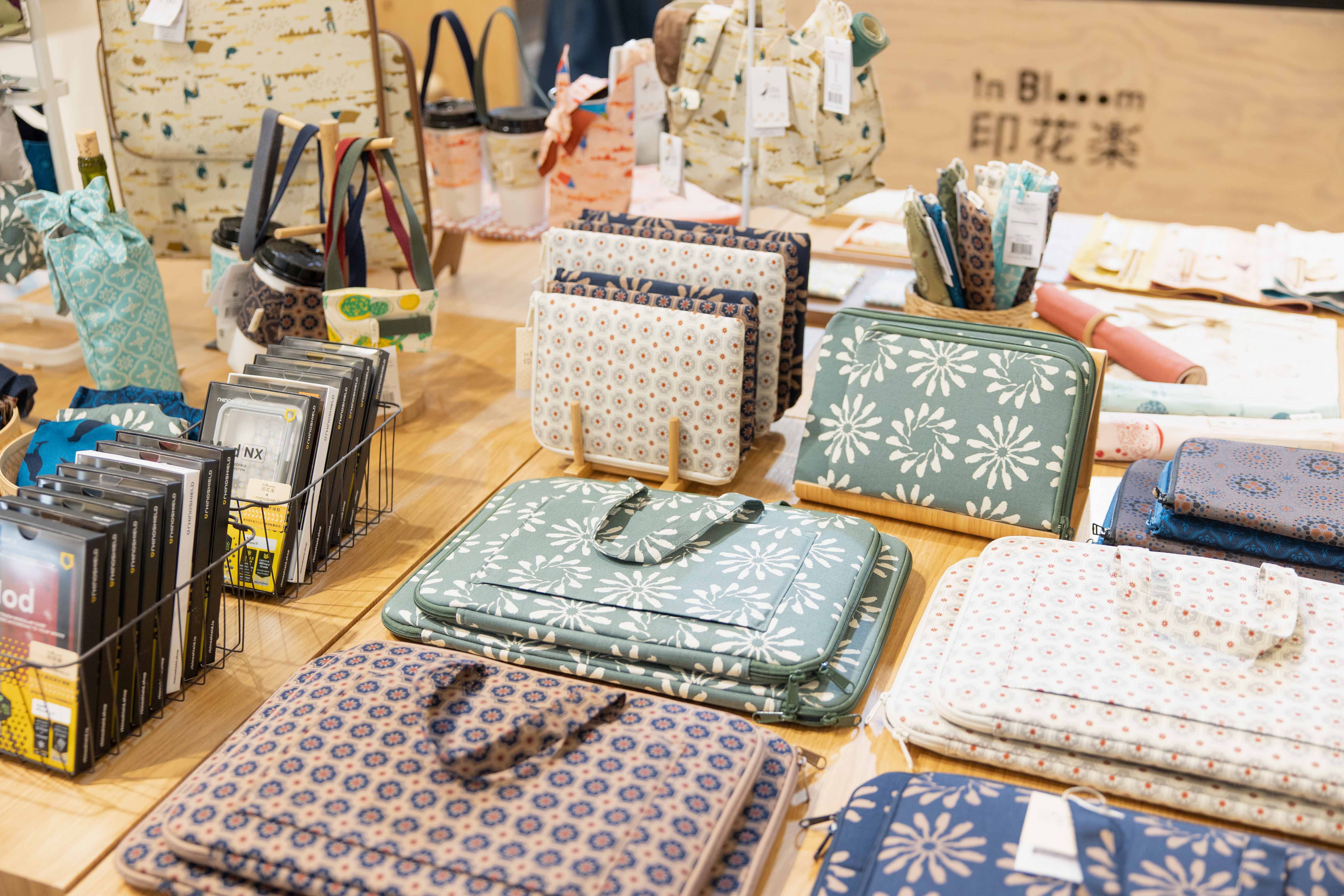Over the course of innovating with inBlooom over several years, developing my design teamhas been at the core of my leadership agenda, and is also analogous to mypersonal experience of gradually moving away from being a “designer,” learningto be a “design executive/manager,” and then ultimately to becoming a “creativedirector,” leading the direction of the brand.
These three identity changes are my personalperception of my role and my growth in three stages within the company.
Apart from the first few years when I was aone-person designer, when the company began adding other designers, I tacked onthe role of “design director.” Not only is the person there to design, but thatperson must also begin to answer questions from other designers and people regardingthe design work: Who is assigned to this case? How do we determine theschedule? Is the design quality good? Does it fit the style of the brand? Is itwhat the market or the customer wants...?
The most important task of the manager’s role is“integration and communication,” internalizing the needs of each unit for the“design,” thinking about how to determine the schedule and manpowerarrangements, and to ensure that the design output meets expectations. Just todo these things is already very mind-twisting - design needs may be a myriad ofdemands, they could be as small as a new partner’s business card, to a seriesof promotional visuals, to something as big as a million-dollar customer designcase, or a main collection of seasonal merchandise. Each designer has his or her own progression,expertise, and perspective... and there are also cross-departmental partners’ideas, customer opinions, product development schedule, budget control, and theproduction techniques of various items to consider.
These are already “management” level matters,which require a completely different mindset from that of a designer. But sincethe company is my own, I have to figure out what to do by myself. At the sametime, I’m still working as a designer, and my continuous design work helps me maintainmy acumen for the market and keep myself at the cutting edge of design - when ageneral is not on the battlefield for a long time, their blade will becomeblunt.
Moreover, my level of happiness is stillrelatively higher when doing design work as compared to doing designmanagement. Opening up Illustrator and drawing away is simply a form ofsalvation as opposed to making a schedule in Excel or calculating costs.
Stepping into the role of the design director, Iled the design team in a substantive way for quite a long time until Iconsciously finished the last design series and hired a design director for theteam. From that point on, I stopped executing the design output myself and steppedinto the position of a real “creative director” for about ten years. In theseten years, we’ve been exploring management methods and establishing designmanagement tools, systems, and processes from scratch, so that the succeedingdesign director has rules to follow and that I can confidently transition myrole. The decision to change roles came from my understanding of the growth ofthe brand. It was time for me to take a back seat and focus on the futuredirection of the brand, cultivating new talent, importing resources, marketlayout, and demonstrating value... to prepare for the next wave of growthchallenges.
After ten years of refinement, the overalldesign look of the brand has become a self-contained entity that cannot beeasily compromised, but at this point, I have to think about “breakthroughs”and how to allow each designer to “express his or her creativity within theframework of the brand.” My philosophy on the leadership of the design team canbe likened to an “orderly garden in the midst of chaos,” where I roughlyarrange the garden paths, visual layers, seasonal inflorescences... Then Iallow the garden to flourish freely. Of course, weeding and fertilizing arestill needed from time to time, while keeping the artificiality at a minimum.The garden doesn’t necessarily have to look like it has “me” written all overit, but that sense of freedom is what I want. To maintain this appearance, it’snecessary to continue to have discussions with the design manager and thedirector based on the existing style in order to provide appropriate guidanceon the scale of creativity.
The level of difficulty for a designbreakthrough will be higher, and we must keep trying new methods and stylestogether with our team. The challenge is “compatibility.” For a brand that hasbeen around for more than a decade, there are bound to be people who expect theclassics to stay alive, but there are also bound to be those who want to seeinnovative breakthroughs. I can’t say that we’ve found the best solution, butat the moment, we’re trying to find compatibility by launching two design pathsevery year - “new classic colors” vs “all new patterns.” Once the new patternshave been put through the annual sales test, they’ll be incorporated into theclassic design collection for future reproduction.
In order to allow designers to keep a patch oftheir own garden under the framework, I created the Floriography Weekly e-newsletter project in 2022, in which onedesigner will be the creator of a print design every week with a theme of theirown, and customers will receive a new print every week after they subscribe tothe weekly newsletter.
At the same time, I also need to lead my team inidentifying the noise interference. When someone says “you guys keep doing thesame thing” or “this thing doesn’t look like inBlooom,”how do you not get lost in the noise? This is also a task for the director. Thekey is to build the confidence of the whole team in our own design creativity sothat the design is not a subjective style or viewpoint presentation, but asystematic approach that can communicate with and complement each other.
The marketing and sales team’s data research,including communities, e-commerce sites, retail stores, distribution channels,and B2B businesses, all possess data that can be shared with the design team,which is the basis for our annual design decisions. The real voice of ourcustomers and internal partners is also important, and collecting these voicesis also an annual event for us. Every year around October, we conduct acustomer opinion survey to collect our customers’ feedback about our annualproducts and activities, which are then used as reference for productdevelopment and creative ideas for the following year. We also conductcross-departmental brainstorming within the company almost simultaneously, sothat all partners under the brand can contribute their ideas, and the resultsof these creative discussions are then consolidated by the brand departmentinto design development ideas. With this foundation in place, there is noguarantee that the best design will be produced, but it definitely has its own referencevalue. Meanwhile, this also strengthens the connections between our workingpartners, the customers, and the design team across the company as a whole,cultivating in everyone the feeling of “this is the design we made together,”which is the most important notion we want to convey.
The role of a creative director is sometimes aboutthreading the needle to ensure the smooth operation of these creativemechanisms; sometimes, it’s about being a cheerleader, inspiring tired andfrustrated colleagues; occasionally, it also morphs into that of a stern devil,urging people to undergo trials by fire...
Although this general has long left the frontline and her sword has blunted, I have gained something else from my leadershiprole. The ultimate task of a creative director is to continuously lead the teamin enhancing the competitiveness and influence of the brand through creativity.
Over the top of the hill is yet another loftyworld, but fortunately I still enjoy the journey of the climb.
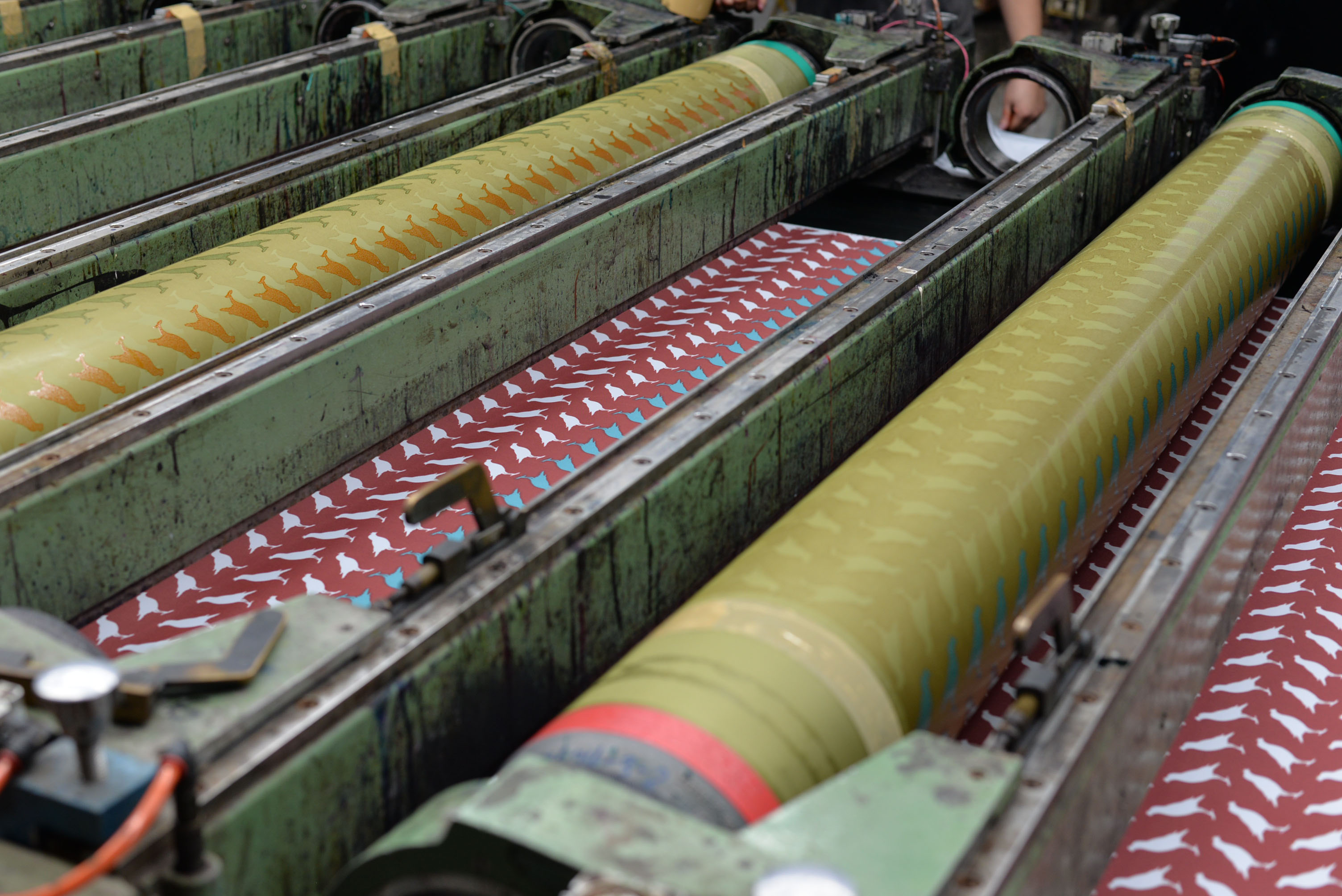
Photo: Production of a large quantity of fabricusing roller printing. This is the Formosan Crested Myna pattern.
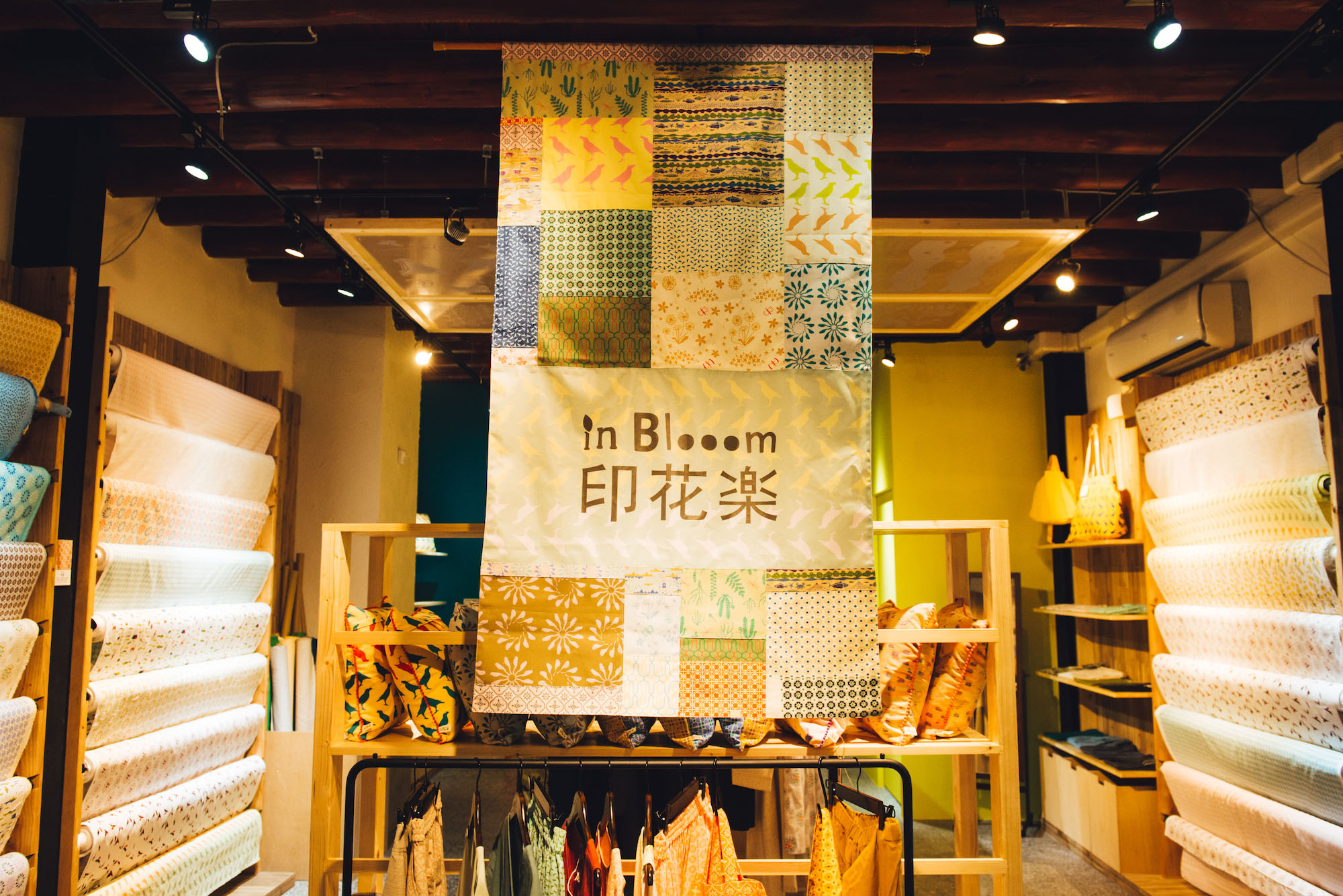 Photo: Inside the inBlooomstore
Photo: Inside the inBlooomstore
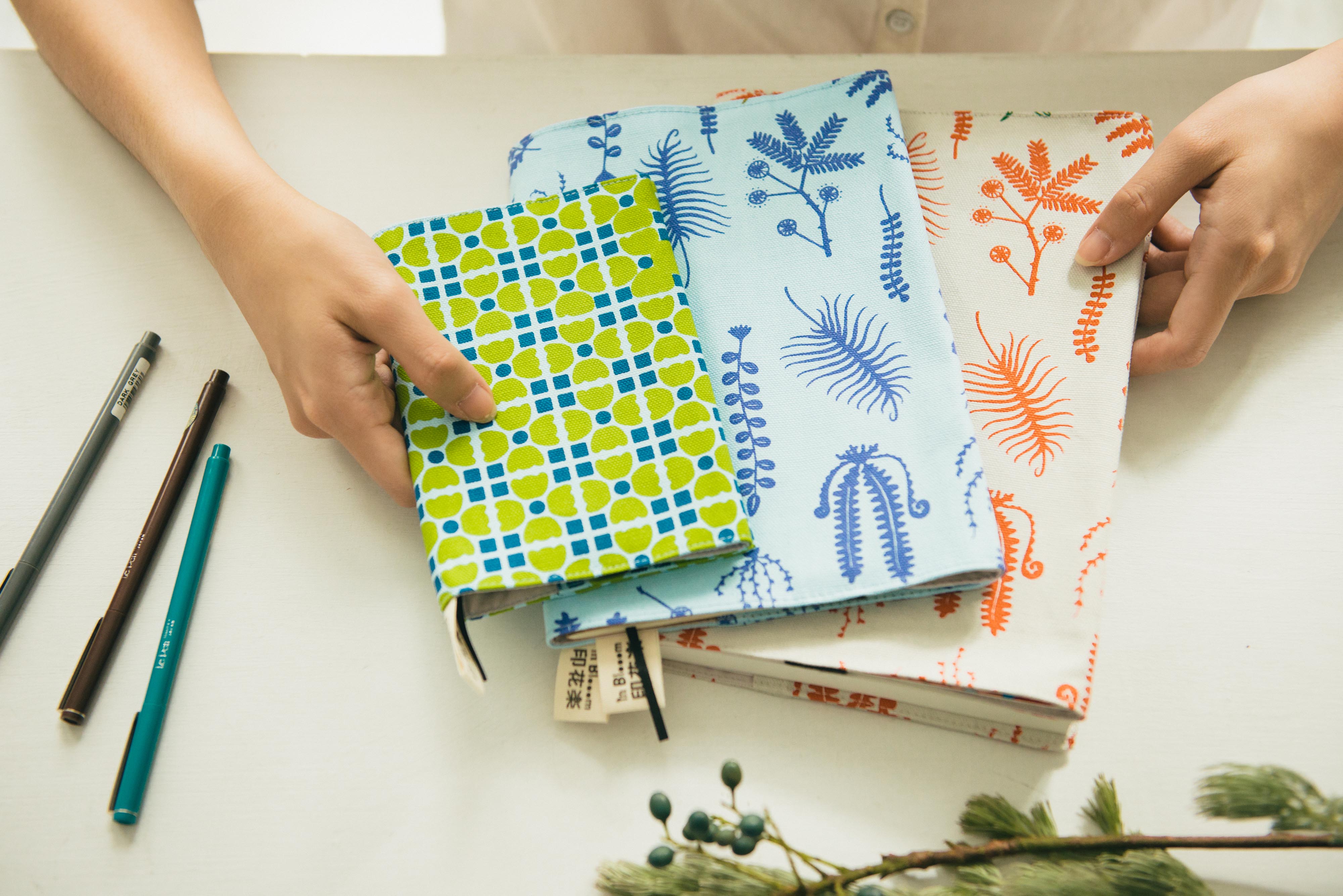
Photo:A variety of original printed merchandise. The color scheme is an importantelement in whether the print design is attractive
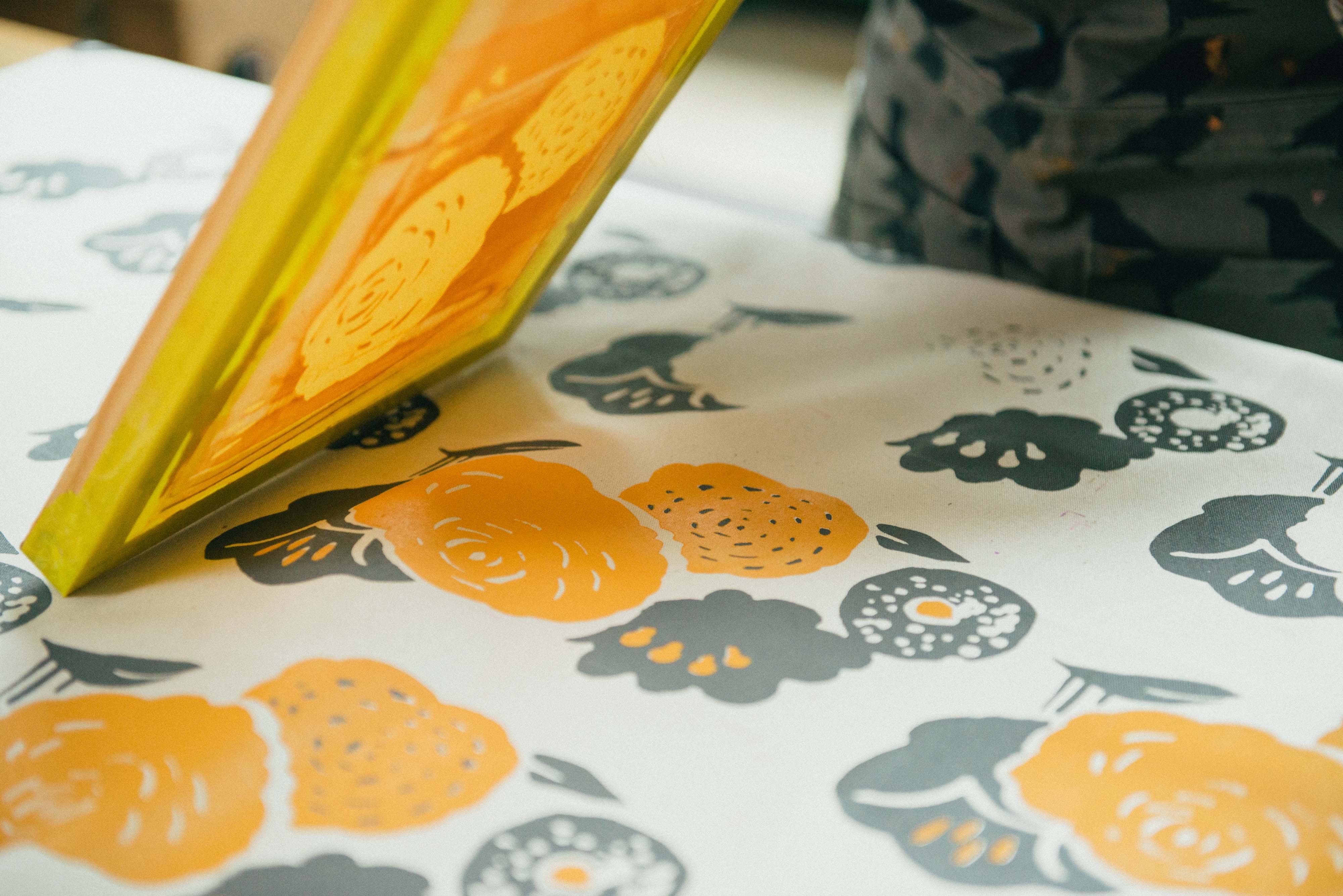
Photo: Hand-made satin print using a screeningplate.
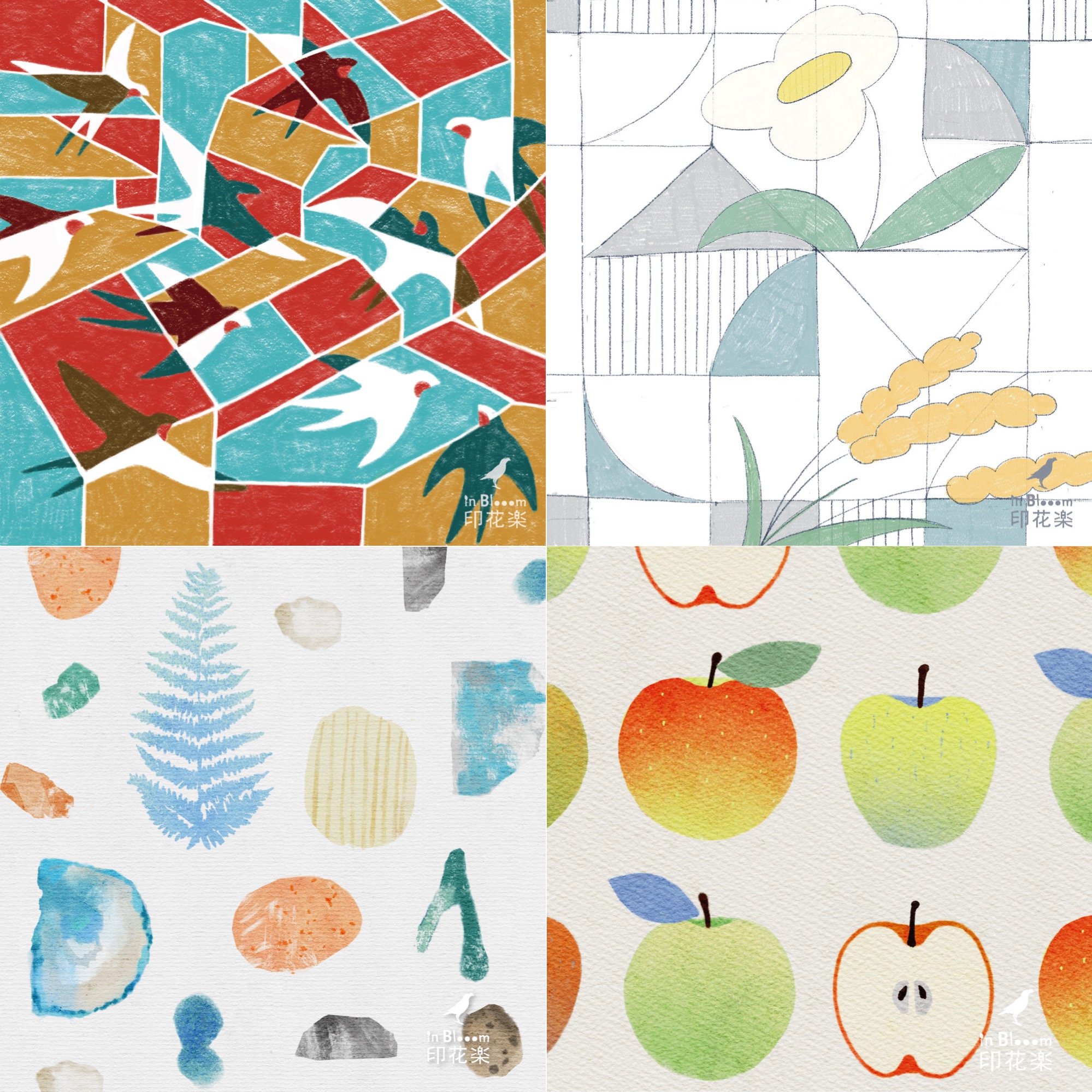
Photo: Subscribe to the brand’s e-newsletter Floriography Weekly and download anoriginal print cell phone wallpaper every week!
